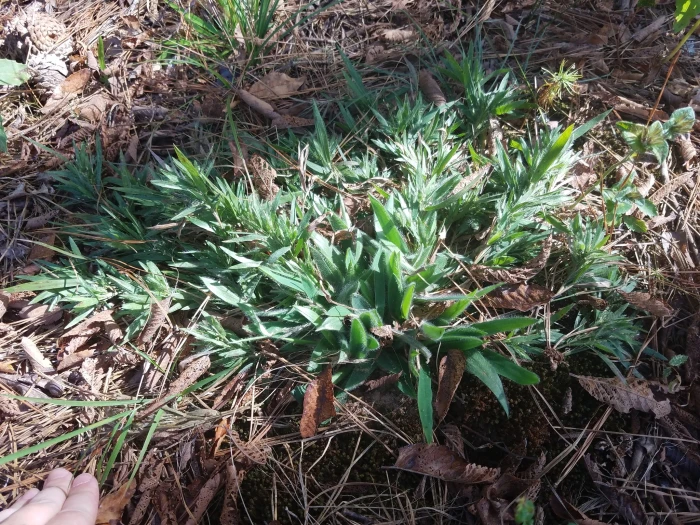Eggleaf Rosette Grass
(Dichanthelium ovale)
Eggleaf Rosette Grass (Dichanthelium ovale)
/
/

© Leila Dasher
CC BY 4.0
Image By:
© Leila Dasher
Recorded By:
Copyright:
CC BY 4.0
Copyright Notice:
Photo by: © Leila Dasher | License Type: CC BY 4.0 | License URL: http://creativecommons.org/licenses/by/4.0/ | Uploader: supertiger | Publisher: iNaturalist |

























Estimated Native Range
Climate Requirements for Montebello, California
| This Plant | Your Site | Plant Suitability for Your Location | ||
|---|---|---|---|---|
| • Precipitation | 18" - 66" | 16" | Your precipitation may be insufficient for this plant. Irrigate N" / year. | Irrigate N" / year |
| • High Temp. | 69°F - 95°F | 89°F | Your summer temperatures are normal for this plant. | Excellent |
| • Low Temp. | -22°F - 59°F | 44°F | Your winter temperatures are normal for this plant | Excellent |
This plant should grow well at your location with about N inches per year (Y minutes per month) of irrigation.
Summary
Dichanthelium ovale, commonly known as Eggleaf Rosette Grass, is a perennial herbaceous plant native to a variety of habitats in North America, including open woodlands, dry fields, and savannas. It is particularly adapted to areas with seasonal variations in temperature and moisture. This species typically grows to a height of 1-3 feet (0.3-0.9 meters) and is recognized for its distinctive broad, oval-shaped leaves and its growth pattern, which includes a basal rosette of leaves and a flowering stem that develops later in the season. The flowers are small and not particularly showy, with a green to purple tinge, blooming from late spring to early summer.
Eggleaf Rosette Grass is valued for its adaptability to different soil types and its ability to thrive in both full sun and partial shade. It is often used in restoration projects and naturalized areas due to its resilience and the ecological role it plays as a host plant for various butterfly and moth species. While it is not commonly used in ornamental gardening, it can be a useful addition to native plant gardens or prairie restorations. It requires minimal maintenance once established and is relatively drought-tolerant. However, it can be susceptible to rust diseases and may require occasional monitoring and management of these issues.CC BY-SA 4.0
Eggleaf Rosette Grass is valued for its adaptability to different soil types and its ability to thrive in both full sun and partial shade. It is often used in restoration projects and naturalized areas due to its resilience and the ecological role it plays as a host plant for various butterfly and moth species. While it is not commonly used in ornamental gardening, it can be a useful addition to native plant gardens or prairie restorations. It requires minimal maintenance once established and is relatively drought-tolerant. However, it can be susceptible to rust diseases and may require occasional monitoring and management of these issues.CC BY-SA 4.0
Plant Description
- Plant Type: Grass
- Height: 1.5-2 feet
- Width: 1-2 feet
- Growth Rate: Rapid
- Flower Color: N/A
- Flowering Season: Spring, Summer, Fall
- Leaf Retention: Deciduous
Growth Requirements
- Sun: Part Shade, Full Shade
- Water: Low
- Drainage: Fast, Medium
Common Uses
Erosion Control, Low Maintenance
Natural Habitat
Native to open woodlands, dry fields, and savannas
Other Names
Common Names: Oval-leaf Panic Grass, Stiff-Leaved Panicgrass
Scientific Names: Dichanthelium ovale, Dichanthelium ovale var. ovale, Panicum alabamense, Panicum benneri, Panicum ciliiferum, Panicum erythrocarpum, Panicum ovale, Panicum ovale var. ovale, Panicum ovatum
GBIF Accepted Name: Dichanthelium ovale